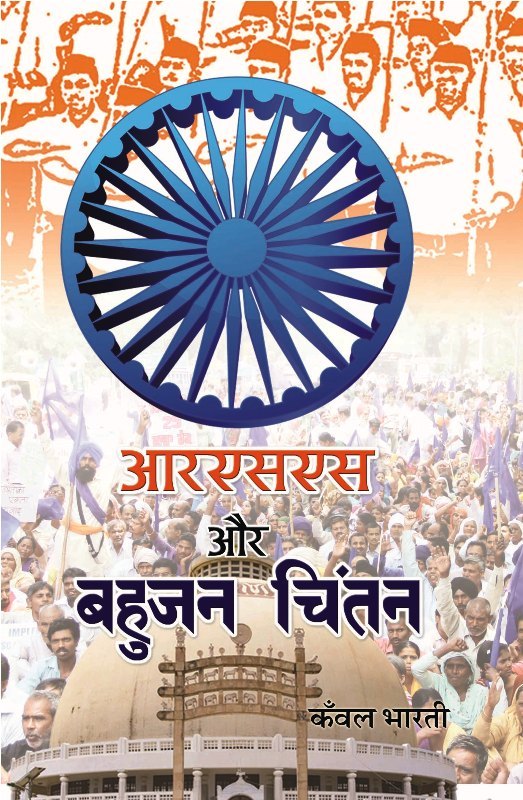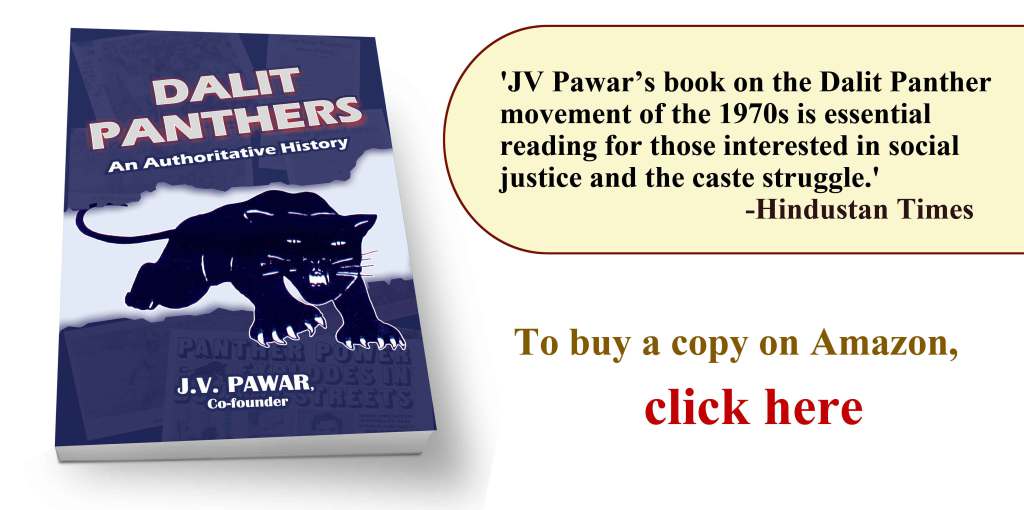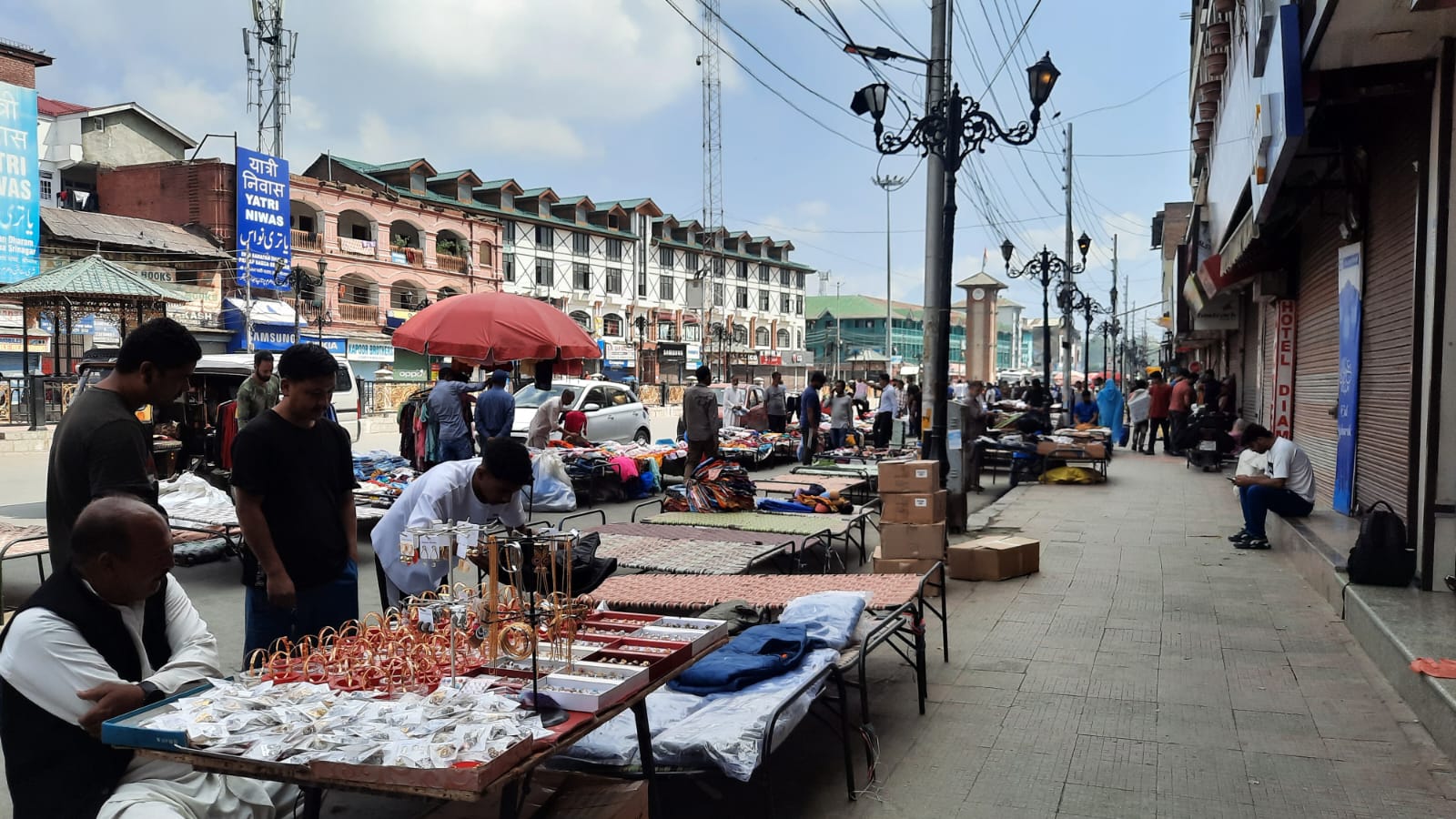“If Hindu Raj does become a fact, it will, no doubt, be the greatest calamity for this country. No matter what the Hindus say, Hinduism is a menace to liberty, equality and fraternity. On that account it is incompatible with democracy. Hindu Raj must be prevented at any cost.”
– Babasaheb Ambedkar, Thoughts on Pakistan (Writings and Speeches, Vol 8, p 358).
I have a special pleasure in introducing this book by Kanwal Bharti, whom I hold in high esteem. I have admired him as one of a few thinkers in Hindi to consistently reflect a good grasp of Dalit universe and take a progressive stand on contemporary issues. Today, when we find the country on the verge of a comprehensive collapse of whatever little it had of democracy, in the process of formally becoming a Hindu Rashtra, which Babasaheb Ambedkar so prophetically warned against, I appreciate his decision to take time out to write with his usual lucidity on the crucial component of the strategy of the proponents of Hindu Rashtra – wooing Dalits. He mainly discusses eight booklets distributed by the Rashtriya Swayamsevak Sangh (RSS) among Dalits – to which many a gullible Dalit fall prey. This is no longer hypothetical; it has already happened and been happening for a few years. Before the 2014 elections, the process had reached alarming levels; most Dalit leaders shamelessly either aligned themselves with the Bharatiya Janata Party (BJP), or joined the party chanting the name of Ambedkar. I wrote about this development in my column in Economic and Political Weekly (EPW) titled “Three Dalit Rams play Hanuman to BJP”. I was referring to Ram Vilas Paswan, Ramdas Athawale and Ram Raj, who adopted the name Udit Raj.
The first wave of ascendance of the Hindutva forces to power at the Centre, divided into three spells, began in 1996 and lasted till 2004 under Atal Bihari Vajpayee’s stewardship; first two spells were short-lived — just 13 days in May 1996 and 13 months in 1998-99 — but the last one lasted five years, 1999 to 2004. Though Vajpayee was famed as a liberal and precariously dependent on the other parties in his National Democratic Alliance (NDA), he did show the fangs of the BJP’s parent organization, the RSS. There were indications of Dalits, who had earlier kept away from the brahmanical party, the BJP, contributing to its win from the 1990s onwards. It meant the propaganda of the RSS to woo Dalits was bearing fruit. Sensing the looming danger, in 2005, I published Hindutva and Dalits: Perspectives for Understanding Communal Praxis (Samya, Kolkata), which comprehensively covered theoretical aspects of the problem in the first part and their practical manifestations in various states in the second. But the second wave that catapulted Narendra Modi to the prime ministership with a clear majority for his BJP in the Lok Sabha has proved terribly sinister. The long experiment of over a dozen years of ruling Gujarat, aptly called the first Hindutva laboratory, soaked in blood of innocent people, had emboldened him to replicate it over the country. With the full backing of global capital, he has set out to create a prototype of the Hindu Rashtra in the next spell, ie, post 2019 elections. Babasaheb Ambedkar had exhorted us to prevent this from happening at any cost!

RSS has largely succeeded in manufacturing a Hindu majority in this unique country of minorities. Our intellectual class lazily accepts journalistic references to a Hindu majority, without realizing that no one is a Hindu. The origin of the word “Hindu” has been traced to outsiders calling the people this side of the River Sindhu, Hindus and that too in a derogatory manner. Castes and their sub-castes and probably sub-sub castes, all strung together in a hierarchy, have been the primary identities of people and given how numerous they were, none among them could claim the majority status. Therefore, a viable Hindu majority had to be constructed out of these splinter caste communities, which the RSS achieved through its concerted effort of effectively othering the Muslims. It overcame its image of an organization of Brahmins, which indeed it was for decades when it celebrated the imaginary glorious past of India under the hegemony of Brahmins. When it floated a political party, Bharatiya Jana Sangh (BJS), contrary to its claim that it was a cultural organization and did not have anything to do with politics, it needed to appeal to the masses, beyond the Brahmins. Exploiting the post-Partition trauma of people in the North and the general resentment against the safeguards provided for Dalits in the Constitution it could woo some people beyond the Dwija fold and create a semblance of a Hindu constituency. However, BJS and its successor, BJP, failed to make a mark and remained a marginal force in politics until 1980s.
As a matter of fact, the Hindu political identity was constructed by the colonial rulers in relation to Muslims, first time during the Morley-Minto Reforms in 1909, when they seeded communal divide in politics by apportioning the share of power to Muslims and Hindus, taking the Muslim League and the Indian National Congress as their representative parties, respectively. It is significant that in the discussions on these reforms, the Muslim League hinted, for the first time, that Dalits were not Hindus and seeded a separate identity for them, which was developed by Babasaheb Ambedkar through his own struggles, culminating in his renouncing Hinduism and embracing Buddhism. After Babasaheb’s passing, Ambedkarite Dalits, who were the most populous and most politicized among Dalit castes, ideologically maintained their non-Hindu identity and treated brahmanical castes as their enemy for a decade or so. But starting with the co-option policy of the Congress after the scare created by the countrywide land satyagraha of 1964-65 and thereafter its policies in rural India rendering Dalits as a vote bank, they began losing their political and ideological coherence. Even then, they maintained their cultural identity as non-Hindus and considered brahmanical castes as their enemy.
The Hindutva forces (Hindu Mahasabha and RSS) were largely apathetic towards the Dalit movement under Ambedkar. Babasaheb Ambedkar initially hoped that if Dalits collectively agitated, some advanced sections of Hindu society may be sensitized to take up reforms. But his hopes were dashed by the caste Hindus. In Mahad, when the Dalits went to Chavdar tank to assert their legal right to drink water from it, the caste Hindu goons attacked them. Nine months after the incident, Ambedkar held a conference and a satyagraha at the Chavdar tank demanding that the tank be opened to Dalits. However, some Brahmins fraudulently obtained a court injunction against the satyagraha. They claimed that the Chavdar tank was in fact Chaudhary tank and their private property, hence the agitators were trespassing. As such, the conference concluded with the burning of a copy of the Manusmriti, and 10,000 delegates who registered themselves as satyagrahis returned empty-handed.

After this disillusionment in Mahad, Ambedkar began talking about conversion, implicit in which was a political threat to the Hindus. But it went unnoticed. He lost faith in satyagrahas and rather turned his attention to politics which was already set along communal lines following the Morley-Minto reforms in 1909. Gandhi had returned from South Africa to India in 1915 and was already casting his Mahatmic shadow on the Congress though he had yet not assumed formal leadership of the Congress. He had already started speaking out against the practice of untouchability. The first time the Congress took note of the Dalits was after its Lucknow Pact with the Muslim League in 1916, which was intended to extract maximum concessions from the British. Notwithstanding this truce, the Congress was woken up to the importance of Dalits to maintain its political edge over the Muslim League. It held many conferences for Dalits and sought their approval to the Lucknow Pact. The Montague-Chelmsford reforms followed through the India Act 1919, which provided for communal representation to Hindus, Muslims, Sikhs and Anglo-Indians. Ambedkar was curiously watching these developments after getting modestly initiated in public life with the testimony before Southborough Commission and by launching a periodical, Mooknayak, during the interlude (1917-1920) in his studies because of the expiry of his scholarship. After cobbling together finances, he went back to London to complete his studies and finally returned in 1923. By then, Gandhi had assumed the leadership of the Congress and established his mass appeal as Mahatma. The RSS, under its founder Keshav Baliram Hedgewar, did not show any concern for these developments and nonchalantly busied itself with organizing upper-caste Hindus, mostly Brahmins. The second sarsangchalak, Madhav Sadashiv Golwalkar, focused on articulating its ideological vision, clearly revealing its revivalist zeal for the lost brahmanical past and identifying with the contemporary fascist experiments in Italy and Germany. But even Golwalkar did not appear concerned about Dalits and their movement under Ambedkar. If at all, he looked at them with disdain.
It was only in 1935, when Ambedkar declared in the conversion conference in Yewale that he would never die a Hindu, the Hindutva forces – Hindu Mahasabha (HMS) – were unsettled. The RSS was still unmoved. Another Depressed Classes conference took place in Pune in 12-13 January 1936, in which Ambedkar reiterated his resolve to renounce Hinduism. In February 1936, Chambhars of East Khandesh extended support to Ambedkar’s resolution on conversion. Another conference – of the Mumbai Ilaka Mahar Parishad – followed in May 1936 to explain the rationale behind conversion and secure support from Mahars. A few months later, Ambedkar’s resolution to convert got support during a conference of Devdasis. This enthusiastic support of the Dalits to Ambedkar’s resolution on conversion and his attraction to Islam, reflected in his speeches, posed a palpable threat to the Hindutva project. Balakrishna Shivram Moonje, who was then president of HMS and the mentor of Hedgewar, negotiated with Ambedkar to secure his promise to not convert to any non-Indian (Abrahamic) religion like Islam and Christianity. He suggested Sikhism instead and assured Ambedkar of the Hindu support for extension of reservations to Dalit converts. Ambedkar appears to have acceded to Moonje’s request, as, within three months of that meeting, he sent a delegation of 13 members to the Golden Temple Amritsar to study Sikhism. There appears to have been one more meeting of Ambedkar with Hindutva leaders, again led by Moonje, who presented a saffron flag to Ambedkar, a member of the flag committee, and pleaded with him to propose it as the national flag.
The RSS, however, remained unconcerned with these developments throughout Golwalkar’s stewardship. It was only when after his death, when Madhukar Dattatraya Deoras took over as the sarsanghachalak, that RSS came out of its Hedgewar-Golwalkarian cocoon and adopted a strategic vision. Deoras realized the importance of Dalits in the RSS project of Hindu Rashtra. In its characteristic clandestine way, RSS included Babasaheb Ambedkar among its greats as pratahsmaraniya (most venerable) and launched an outfit, Samajik Samarasata Manch (SSM – Social Harmony Platform), on 14 April 1983 in Pune. Dattopant Thengadi, who spearheaded this outfit, spoke on the occasion, saying “equality was impossible without harmony”. It was inversion of what Ambedkar stood for: Ambedkar spoke of samata (equality) and not samarasata (harmony); rather, he revolted against the false samarasata of the caste system and held that real social harmony was impossible without equality in society. Nonetheless, this outfit was able to create enough confusion among the so-called Ambedkarites. Thengadi went on saffronizing Ambedkar by fabricating ideological similarities between him and Hedgewar. SSM created a huge literature to stress how the RSS worked for Dalits, how Ambedkar was all praise for the RSS, how Ambedkar worked for the betterment of the Hindus, how Ambedkar was against Muslims, etc. The eight booklets dissected by Bharti in this book are part of this propaganda literature.
The readers would easily realize to what extent the Hindutva forces have been using half-truths, untruths and white lies in their propaganda. What they also need to understand is that this method of relying on lies is the established method of Fascists. The historical affinity of Hindutva leaders for Fascism has by now been thoroughly exposed and does not need to be reiterated here. An Italian researcher, Marzia Casolari, has told the entire story of how Mussolini and his fascist regime was popular among the Maharashtrian Brahmins in the late 1920s. Basically, they discovered that the contemporary model of Fascism well embodied their brahmanical aspirations. Fascism is best defined in terms of certain characteristics, and if we compare them with what is going on under Narendra Modi, we won’t have any doubt about its fascist character. Stanley Payne, a researcher, proposed a framework that outlined certain “fascist minimum”. It comprised (a) fascist negations (anti-liberalism, anti-democracy and anti-communism); (b) generic ideological motifs and goals (State as an “absolute”, expansionist foreign policy, subsuming individual autonomy, some collective “other” as the enemy, extreme authoritarian nationalism, an apocalyptic perception of deep “civilizational crisis”; (c) special and common features of style and organization (charismatic leadership, exaltation of youth and youthfulness of fascist leaders, glorification of violence, evoking mass emotions through symbols, and masculinity). If we examine the current regime based on these criteria, evidently, it will score quite highly. This generalized framework may still need to take into account the historical brahmanical cunning, which is what may concern most Dalits.
Look at how this regime has brazenly used the Bhima-Koregaon commemoration to incarcerate select human-rights activists, peoples’ lawyers and pro-people intellectuals, using their draconian law, the Unlawful Activities Prevention Act (UAPA), which is antithetical to any democracy and uses the bogey of Maoism. Dalits, who have been indoctrinated against communism for a long time, turn apathetic when the government labels their own people Maoist. They do not understand that it is a strategy to terrorize them into silence. None of the Ambedkarite organizations have publicly protested against this maligning of Bhima-Koregaon by linking it to Maoists. No one should condone violence by anyone but at the same time one needs to look at the conduct of the State, too. The State is a billion times more powerful than peoples’ movements such as the Maoists, howsoever misled they may be, and should act responsibly in accordance with the law. But the State through its coercive arm, the police, indulges in violence against the innocent poor, impelling many people to term it as the biggest organized gang of criminals. The State uses Maoists as an alibi to terrorize people into silence. Dalits need to understand that this subverting of democracy by the State is the biggest insult to Babasaheb Ambedkar.
Kanwal Bharti has competently handled the polemics to expose the lies of the RSS and proved how anti-Dalit and anti-Ambedkar it is. The greatest virtue of this book is that it communicates with laypeople. After reading this book, I hope no Dalit will have any reason left to see the RSS and its parivar as anything other than anti-Dalit and anti-people. Indeed, Dalits need to identify with these “people”, people like them, not by caste but by class, as Bharti says at the end.
Forward Press also publishes books on Bahujan issues. Forward Press Books sheds light on the widespread problems as well as the finer aspects of Bahujan (Dalit, OBC, Adivasi, Nomadic, Pasmanda) society, culture, literature and politics. Contact us for a list of FP Books’ titles and to order. Mobile: +917827427311, Email: info@forwardmagazine.in)
The titles from Forward Press Books are also available on Kindle and these e-books cost less than their print versions. Browse and buy:
The Case for Bahujan Literature
Dalit Panthers: An Authoritative History
Mahishasur: Mithak wa Paramparayen
The Case for Bahujan Literature
Dalit Panthers: An Authoritative History








